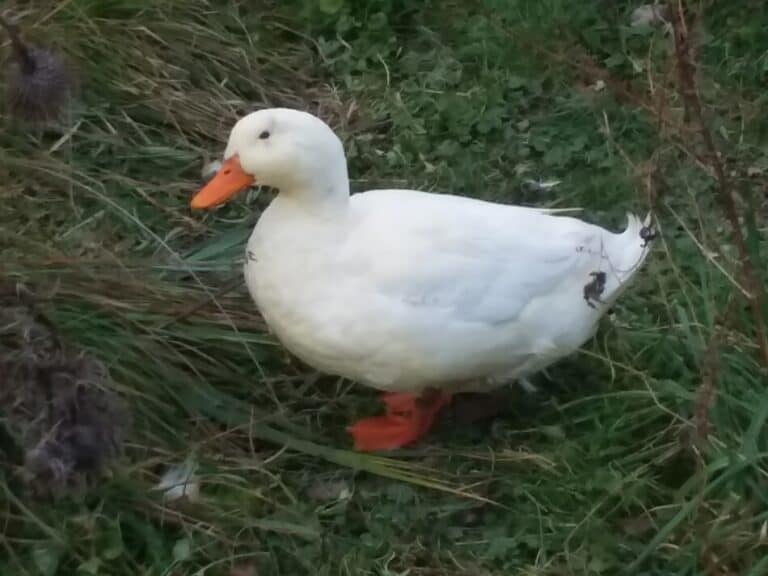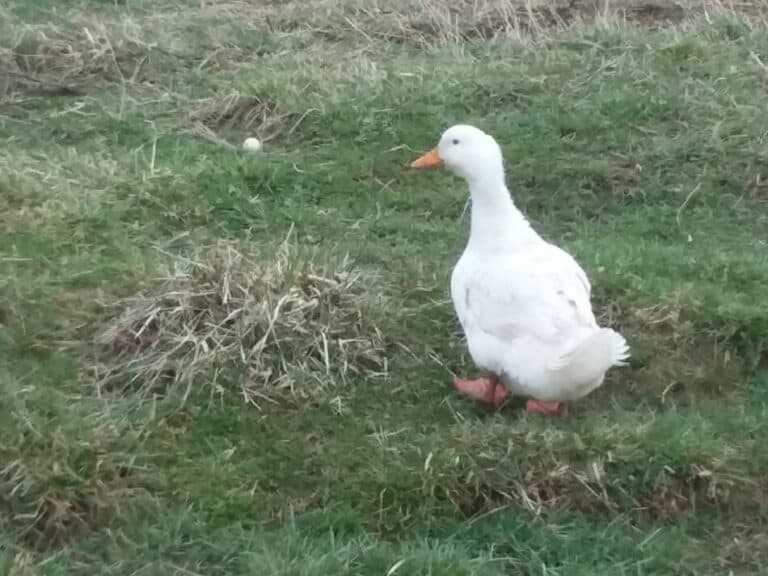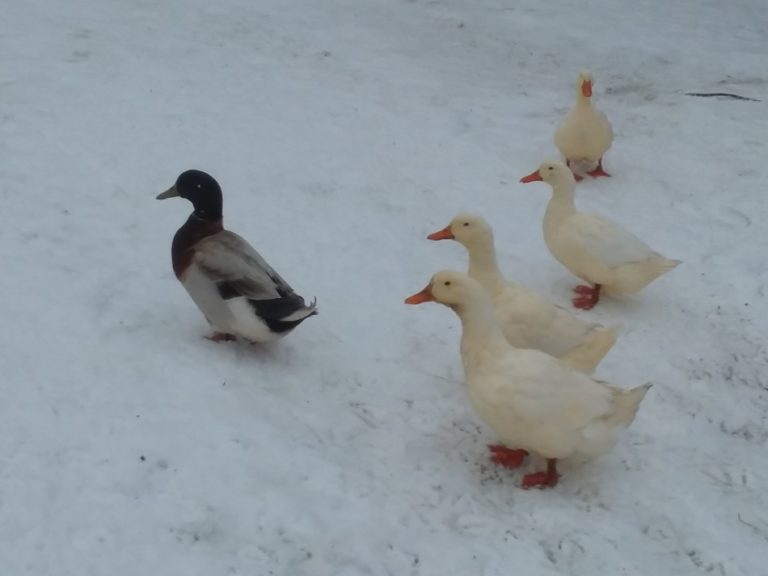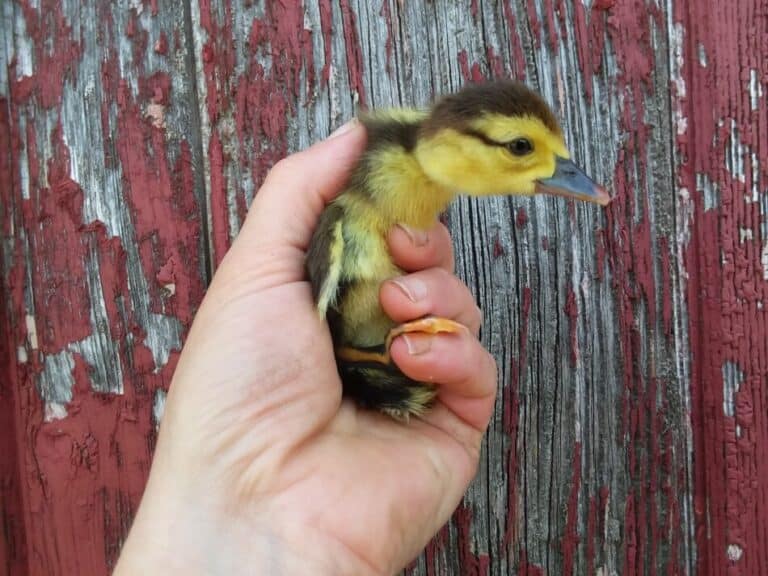Ducks: How Fast Do They Grow And When Will They Be Ready To Eat?
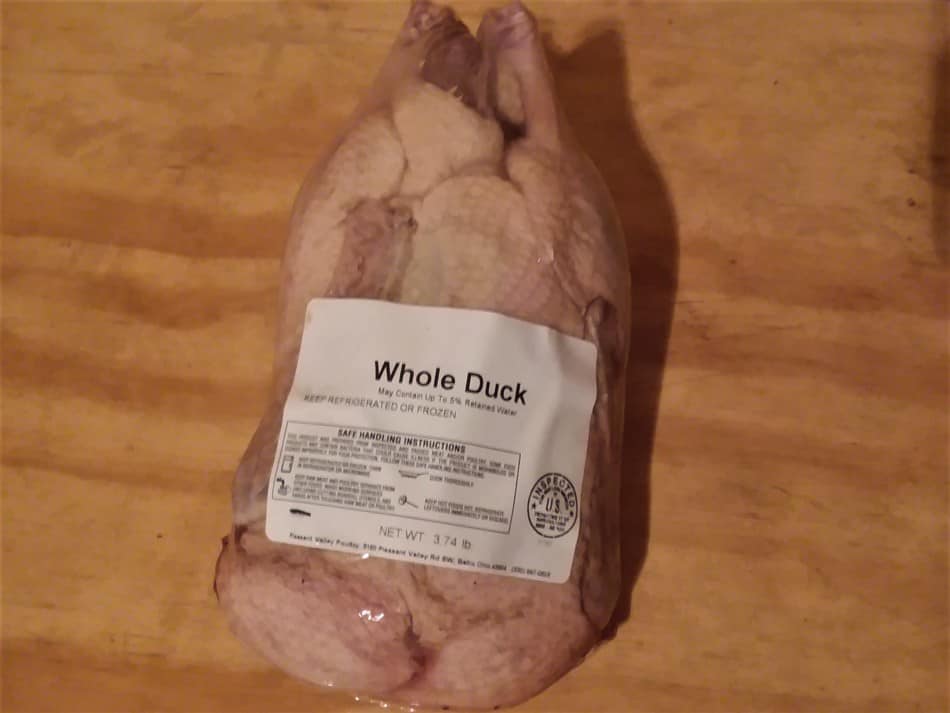
Considering raising a few ducks? You’ll be glad you did, home raised ducks are fast, easy and fun!
Now to the specifics: How long will your ducklings take to reach finishing weight?
Ducks, especially Pekins, are fast growers that will be ready to eat at 7-8 weeks of age. All other duck breeds will take longer to reach processing size and weight.
Is Raising Ducks For Meat Worth It? goes through all the numbers you need to figure out a budget for your ducks.
Ducks are always a highlight of my day, especially the cute little ducklings in the brooder!
I enjoy baby poultry of all kinds, really, but ducklings are the ones that make me smile the most.
The best part about ducks is they are hardy. I find ducklings to be much easier to raise than chicks. Ducklings are just tougher.
Granted, they can be messier than chicks, but ducklings are definitely more likely than chicks to make it out of the brooder and into your freezer!
Ducks are also a quick project, with Pekins taking just about two months to grow.
Wow, do those Pekins grow fast! Let’s get started with the basics so you can get going on raising the best duck you’ve ever tasted!
Pekin ducks reach full size at 2 months
Pekins are the fastest growing domestic duck and the most common to be kept as a meat bird.
They are also good layers if you are thinking about duck eggs but eggs won’t start showing up until 5-6 months of age.
Cost To Raise Pekin Ducks From Duckling To 8 Weeks shows you the things you need to budget and plan on for your ducklings.
Pekins reach full size at 7-8 weeks and would most commonly be butchered then. If you want your birds a bit larger wait another 3 weeks or so.
The reason for the odd, but specific, weeks of age to butcher is that the feathers come in at certain ages on a duck.
While you can butcher your ducks at any time, if you want a nice looking finished product you need to process them at a time when there are no pin (new growth) feathers.
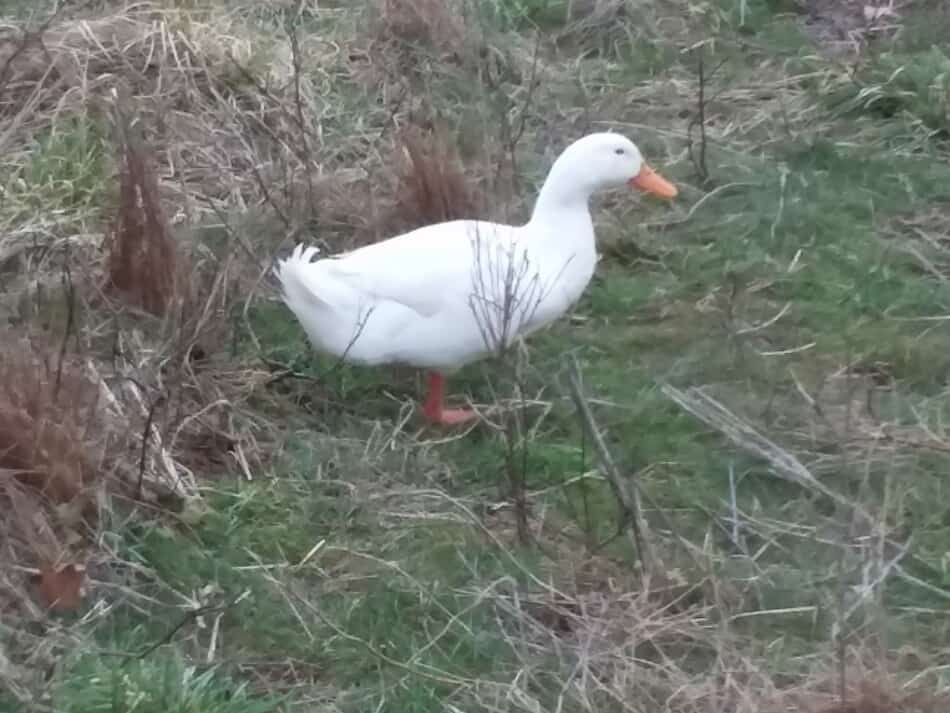
Of course there are many breeds of ducks that you could be raising, any of which could be used for eating.
The Pekin is just the most common choice but by no means the only choice.
Other duck breeds will grow slower than Pekin
Pekins are also the duck with the most specific growth information available, simply because they are the most popular meat duck.
Other ducks will mature into fine eating birds as well, it will just take a longer time, more like 5 months to get to a good mature weight.
The advantages to Pekins is that they grow the fastest, are easy to find and are easiest to pluck, since the feathers are white.
But they also require attending and need supplemental feed, they grow too fast to get all of the feed they need from foraging around.
If you want or your situation requires a duck that can do more for itself then you will be better served with a slower growing duck.
These slower growing ducks (light breeds) will be able to find most of their own feed and raise their own ducklings, like Khaki Campbells or Runners.
The heavy breed ducks will grow slower and still need supplemental feed, like Rouens.
Looking for more info on duck breeds? Consider reading my article 16 Duck Breeds For Eggs And Meat to get more specifics on each breed and its best qualities.
All duck breeds can be used for meat.
The breed you choose depends upon which combination of factors you want mainly size at maturity and time to butchering age.
There are folks who love to eat Muscovy, for instance.
They are willing to wait for the drakes to get big, close to a year old before processing them for meat.
They like the taste so much, to them it’s worth the wait.
Here is a super useful table from Metzer Farms, Comparison of Duck Breeds, which includes a temperament score and average mothering ability, as well as general characteristics of each duck breed.

How can I tell the age of my ducks?
The just hatched ducks from the hatchery will be 2 days old or less.
If you new ducklings are being shipped in, they will be headed your way as soon as they are dry.
All baby poultry can be shipped to a new home as long as they are kept warm in shipping and arrive at their new house by day two.
Ducklings hatch with energy stores to use for the first two days of life, after that they need to be at their new home so they can be eating.
How to tell age of a duckling
If you didn’t get your ducklings from a hatchery you have more investigative work to do to determine the age of your new poultry project.
Here are the things you need to look at:
- Is the duckling completely fuzzy or does it have some feathers
- Check the wing tips for new feathers, this is the first place they will grow
- Look at the overall shape of the duckling
Newly hatched ducklings
The really young duckings, like the newly hatched ones will still be a bit awkward and very round.
They kind of remind me of a beetle, how they are still hunched up in shape.
New ducklings don’t have much of a duck shape to their bodies at all and look like they don’t have a neck, just the bill and webbed feet! This is normal for a very young duckling.
Ducklings at two weeks of age to a month
If the ducklings still have all of their down but are capable movers and have more of an adult duck shape, now you are looking at a duckling that is two weeks old or older.
Ducklings at about a month of age
Feathers at the wings but no where else? These ducklings are around a month old.
Ducklings ready to butcher at 7-8 weeks
Mostly feathered but still a few pieces of downy feathering here and there? These ducklings are more in the 7-8 week range.
From here up, the ducklings are looking like adults, just a bit smaller in size. For the males, a few will have the curled up tail feather.
Ducks over two months of age look like adults
Completely feathered- no fuzzy feathers at all? This is a nearly full grown bird.
Most ducks will get a bit bigger (as in wider) once they are fully feathered.
This means if you were to put a young duck next to an older duck of the same breed and gender, the young duck would look the same but just have a slightly smaller body than the older adult.
You should also see a tail feather on the drakes curl up at this age.
Reminder on color patterns show in adult drakes
Keep in mind that ducks with different coloring in males and females, the adult feathering pattern will not show up in the immature males.
The young males will be colored like the young females until they get their adult plumage.
Do ducks grow faster than chickens?
Pekins grow faster than traditional breed chickens, but not as fast as Cornish Cross broilers.
Yes and no.
Yes, if you are taking about Pekins versus traditional breed chickens, like Barred Rocks or Wyandottes.
In this case the ducks would be ready to eat in 8 weeks where as the traditional breed chickens would take 5 months.
No, for either of two reasons.
- If you are taking about the commonly grown meat chicken, a cornish rock broiler, then the broiler is faster than a duck to grow to eating size. The broiler takes only 6 weeks to butchering weight (vs 8 for the duck).
- If you are choosing to raise ducks other than Pekins, your ducks will take about the same time to get to finishing (eating) size as a traditional breed chicken. So they won’t be faster they just won’t really be slower either.

Do I need a pond to raise ducks?
This is a common misconception that seems to keep a lot of people away from raising ducks. Ducks do not need a pond to be successfully raised.
They do need to be able to get their whole beak in the water and swish it around, but their body does not need to be in water.
Now don’t get me wrong, ducks love any opportunity to swim! They zoom around to any puddle, even if it just gets their tum a bit wet, but they don’t need to swim.
Once they are full size if you want to give them a swimming area go for it, they will certainly like it.
A few precautions to take: make sure they are fully feathered, make sure they can easily (and I mean super easy) get in and out of the water, and be prepared to clean out the swimming area.
Ducks + water = mess
My favorite source for duck related information is Metzer Farms, in California. Here’s a link to the duck rearing section.
They also sell all kinds of ducks and geese. I have never purchased anything from them, but would definitely order from them since they are waterfowl specialists.
When are ducks ready to butcher?
Pekins are ready to butcher at 47 days, as long as they have been eating all they can eat feed.
When they are fully feathered grab one and see how they feel.
Heavy for their size and well filled out? Then double check their age on your calendar to be sure to avoid the pin feathers and you are good to go.
Or can you still feel the keel bone (bone along bottom front of breast) and they are lighter than they look? These need more time.
Of course they are your ducks and you can process them at any time you feel is appropriate, but you will get the most meat per bird and for your time if you butcher them in good well grown condition.
For Pekins this is 7-8 weeks, for other ducks it will be longer.
Once a duck is to the size you want, you can process it at any time.
The reason for the specifics on processing times is the pin feathers only.
The duck’s meat is great whenever. The processing will be much more tedious when there are more pin feathers to deal with.
